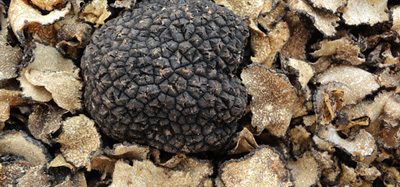Scientists take step closer to producing heat-tolerant wheat
- Like
- Digg
- Del
- Tumblr
- VKontakte
- Buffer
- Love This
- Odnoklassniki
- Meneame
- Blogger
- Amazon
- Yahoo Mail
- Gmail
- AOL
- Newsvine
- HackerNews
- Evernote
- MySpace
- Mail.ru
- Viadeo
- Line
- Comments
- Yummly
- SMS
- Viber
- Telegram
- Subscribe
- Skype
- Facebook Messenger
- Kakao
- LiveJournal
- Yammer
- Edgar
- Fintel
- Mix
- Instapaper
- Copy Link
Posted: 4 May 2020 | Sam Mehmet (New Food) | No comments yet
The scientist found that by swapping just one amino acid in wheat’s enzyme specific-protein, the plant was prompted to produce enzymes faster in hotter temperatures, providing potential protection for the crop in hotter climates.


Researchers working on molecular-level responses in crops have reportedly taken a step closer to their goal of producing heat-tolerant wheat.
The researchers explained that plants have Rubisco activase (Rca), a specific protein that prompts the energy-producing enzyme (Rubisco) to activate when the sun is shining and signals it to stop when the leaf is deprived of light to conserve energy.
With this in mind, the team from Lancaster University reported that swapping just one molecular building block out of 380 that make up an Rca in wheat enables it to activate Rubisco faster in hotter temperatures, suggesting an opportunity to help protect crops from rising temperatures.
“We took a wheat Rca (2β) that was already pretty good at activating Rubisco in lower temperatures and swapped out just one of its amino acids with one found in another wheat Rca (1β) that works pretty well in higher temperatures but is rubbish at activating Rubisco – and the result is a new form of 2β Rca that is the best of both worlds,” said Elizabete Carmo-Silva, a senior lecturer at the Lancaster Environment Centre who oversaw this work for a research project called Realizing Increased Photosynthetic Efficiency (RIPE). The project is engineering crops to be more productive by improving photosynthesis, the natural process all plants use to convert sunlight into energy and yields.
The researchers explained that naturally occurring wheat Rca 1β has an isoleucine amino acid and works up to 39 degrees Celcius, but is not great at activating Rubisco, whereas the naturally occurring 2β has a methionine amino acid, works up to about 30 degrees Celcius, and is good at activating Rubisco. As a result, the team created a new version of 2β with an isoleucine amino acid that works up to 35 degrees Celcius and is “quite good” at activating Rubisco.
“Essentially, 1β is a rubbish enzyme and 2β is sensitive to higher temperatures,” Carmo-Silva said. “The cool thing here is that we have shown how this one amino acid swap can make Rca active at higher temperatures without really affecting its efficiency to activate Rubisco, which could help crops kickstart photosynthesis under temperature stress to churn out higher yields.
“When looking at cowpea growing regions in Africa, it goes all the way from South Africa with an average around 22 degrees Celcius to Nigeria at about 30, and areas further north get to 38,” Carmo-Silva said. “If we can help Rubisco activate more efficiently across these temperatures, that is really powerful and could help us close the gap between yield potential and the reality for farmers who depend on these crops for their sustenance and livelihoods.”
Related topics
Environment, Food Security, Research & development, Sustainability, Temperature control









